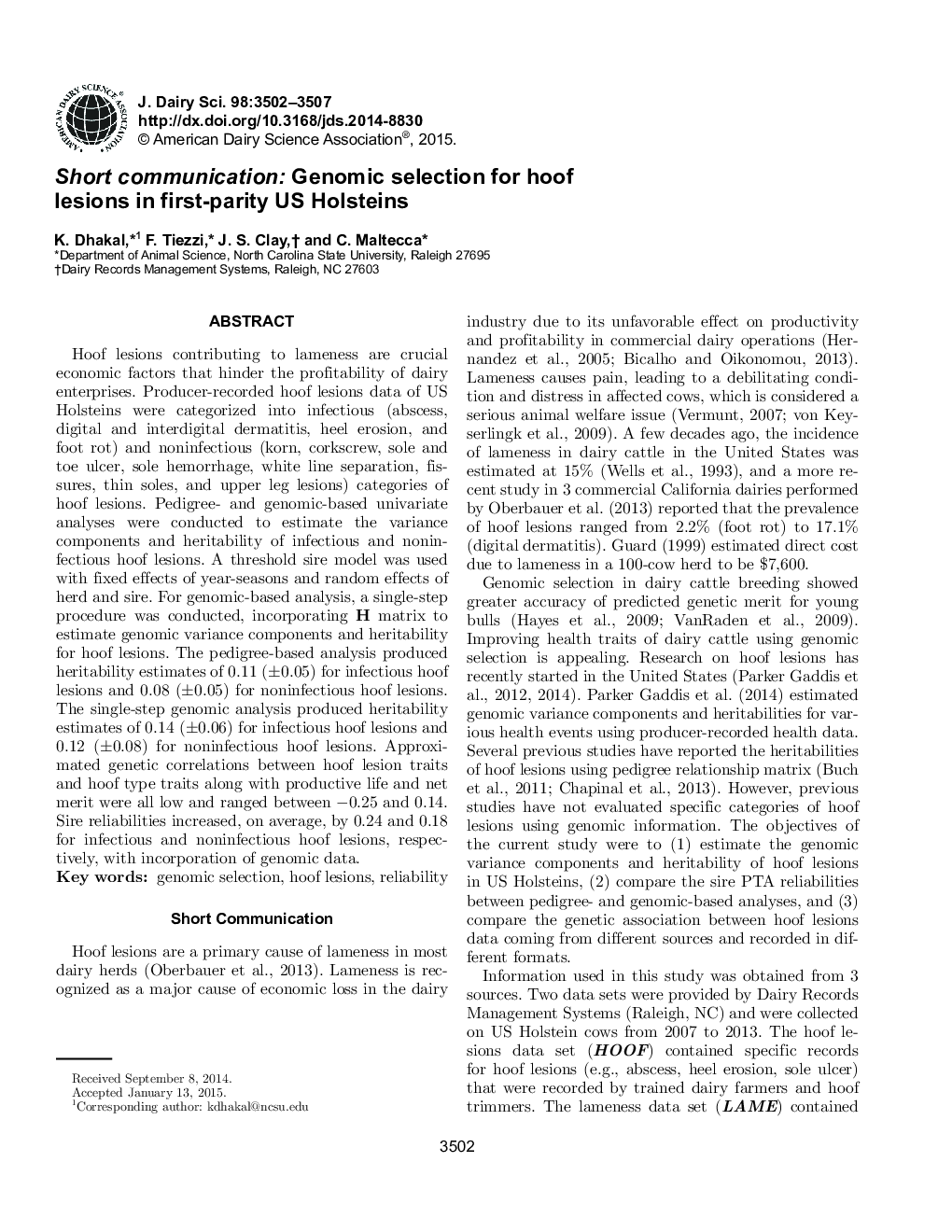| Article ID | Journal | Published Year | Pages | File Type |
|---|---|---|---|---|
| 10975608 | Journal of Dairy Science | 2015 | 6 Pages |
Abstract
Hoof lesions contributing to lameness are crucial economic factors that hinder the profitability of dairy enterprises. Producer-recorded hoof lesions data of US Holsteins were categorized into infectious (abscess, digital and interdigital dermatitis, heel erosion, and foot rot) and noninfectious (korn, corkscrew, sole and toe ulcer, sole hemorrhage, white line separation, fissures, thin soles, and upper leg lesions) categories of hoof lesions. Pedigree- and genomic-based univariate analyses were conducted to estimate the variance components and heritability of infectious and noninfectious hoof lesions. A threshold sire model was used with fixed effects of year-seasons and random effects of herd and sire. For genomic-based analysis, a single-step procedure was conducted, incorporating H matrix to estimate genomic variance components and heritability for hoof lesions. The pedigree-based analysis produced heritability estimates of 0.11 (±0.05) for infectious hoof lesions and 0.08 (±0.05) for noninfectious hoof lesions. The single-step genomic analysis produced heritability estimates of 0.14 (±0.06) for infectious hoof lesions and 0.12 (±0.08) for noninfectious hoof lesions. Approximated genetic correlations between hoof lesion traits and hoof type traits along with productive life and net merit were all low and ranged between â0.25 and 0.14. Sire reliabilities increased, on average, by 0.24 and 0.18 for infectious and noninfectious hoof lesions, respectively, with incorporation of genomic data.
Related Topics
Life Sciences
Agricultural and Biological Sciences
Animal Science and Zoology
Authors
K. Dhakal, F. Tiezzi, J.S. Clay, C. Maltecca,
